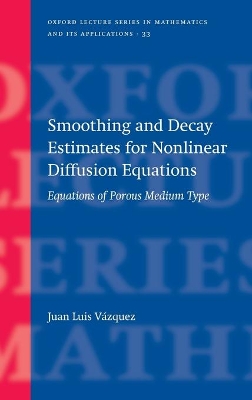Oxford Lecture Series in Mathematics and Its Applications
1 primary work
Book 33
Smoothing and Decay Estimates for Nonlinear Diffusion Equations
by Juan Luis Vazquez
Published 1 January 2006
This text is concerned with the quantitative aspects of the theory of nonlinear diffusion equations; equations which can be seen as nonlinear variations of the classical heat equation. They appear as mathematical models in different branches of Physics, Chemistry, Biology, and Engineering, and are also relevant in differential geometry and relativistic physics. Much of the modern theory of such equations is based on estimates and functional analysis.
Concentrating on a class of equations with nonlinearities of power type that lead to degenerate or singular parabolicity ("equations of porous medium type"), the aim of this text is to obtain sharp a priori estimates and decay rates for general classes of solutions in terms of estimates of particular problems. These estimates are the building blocks in understanding the qualitative theory, and the decay rates pave the way to the fine study of asymptotics. Many technically relevant questions
are presented and analyzed in detail. A systematic picture of the most relevant phenomena is obtained for the equations under study, including time decay, smoothing, extinction in finite time, and delayed regularity.
Concentrating on a class of equations with nonlinearities of power type that lead to degenerate or singular parabolicity ("equations of porous medium type"), the aim of this text is to obtain sharp a priori estimates and decay rates for general classes of solutions in terms of estimates of particular problems. These estimates are the building blocks in understanding the qualitative theory, and the decay rates pave the way to the fine study of asymptotics. Many technically relevant questions
are presented and analyzed in detail. A systematic picture of the most relevant phenomena is obtained for the equations under study, including time decay, smoothing, extinction in finite time, and delayed regularity.
